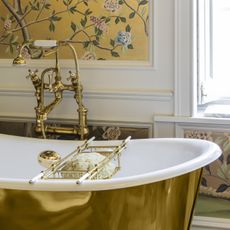The demolition of Halnaby Hall is a warning from history, but destruction needn't always be a disaster
The loss of our great country houses is lamentable, but need not always spell doom. Lucy Denton of Bidwells – who has family connections to the infamously-demolished Halnaby Hall – explains.
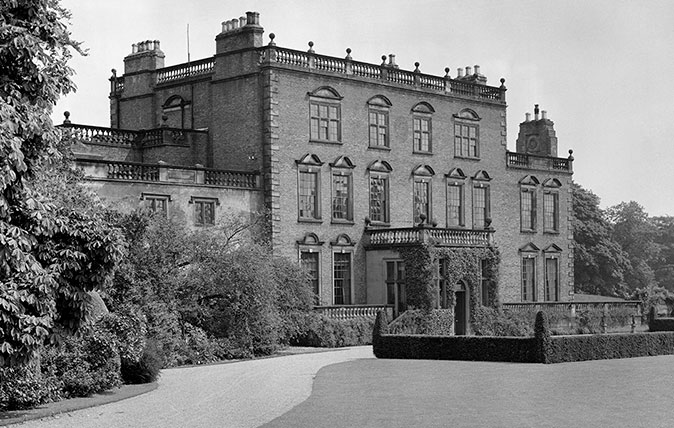

The wretched fate of Halnaby Hall, a 17th-century mansion in North Yorkshire, was depicted to gruesome effect on the cover of the 1974 The Destruction of the Country House, shown compellingly before and after its devouring by the wrecking ball.
The skeletal mess of timber frames and jagged plaster represented the worst of the archetypal demises of so many of these once-powerful domains.
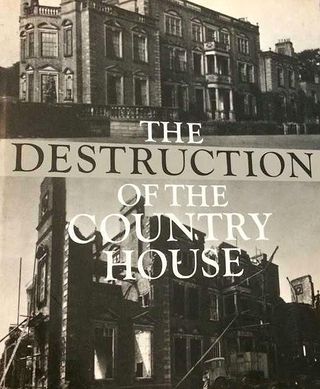
Formerly the seat of the Milbanke family, Halnaby was also renowned as the setting of Byron’s dismal honeymoon (disparagingly referred to as his ‘treaclemoon’) in 1815.
Recorded in folklore as by Inigo Jones (although it was built in 1661, nearly 10 years after his death), Halnaby was not alone in its unbecoming finale. It was destroyed, as with so many, by a drip-fed ruination, taking in the agricultural depression, World Wars, disruptions in ownership, emaciation of its estate and the rebuff of the National Trust.
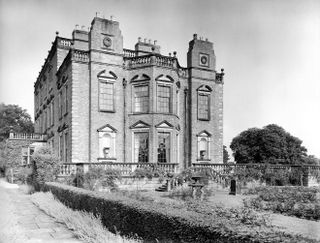
Extraordinarily, in 1951, it was pronounced by North Riding County Council as of ‘no national, historical, or architectural interest’. Its last custodian, George Gregory, fought to save it as a country club, to no avail.
What was described in the sale details of 1852 – estate dwellings, plantation and more than 15,000 acres of land – had dwindled to almost nothing a century later. Amputated parts of the house were relocated; the entire dining room, for example, was ‘re-established’ at the Bridge Inn, on the A1 near Wetherby, and the Yorkshire Post, in 1952, reported the purchase of a fireplace by the Ministry of Works, ‘with ‘pineapple and dentilled cornice’, destined for Kensington Palace.
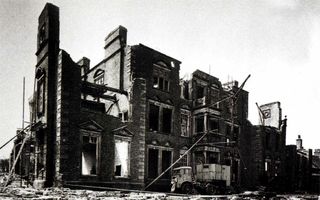
Halnaby was not the only one to be blown up, pulled down and cannibalised: hundreds of country houses were lost, predominantly in the first half of the 20th century. Such buildings and their estates are, despite modern planning and historic-building legislation and changes in perception, still occasionally vulnerable – Cowbridge House in Wiltshire was demolished as recently as 2007.
Sign up for the Country Life Newsletter
Exquisite houses, the beauty of Nature, and how to get the most from your life, straight to your inbox.
Less well known, however, are the effects on the hinterlands of these places when the mansion is gone.
The force of the house as the nucleus of its territory encompasses the landscapes and buildings beyond, defined by an identity, related by patronage, even distinguished via the prosaic, such as matching paint to doors and gutters of estate cottages – yellow for Cowdray, West Sussex, springs to mind, or the turquoise splashes around Chatsworth, Derbyshire. What remains must therefore deteriorate or flourish in tandem.
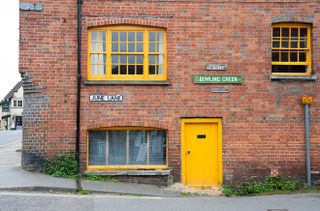
Prices of surviving properties are not always negatively impacted and greatly depend on location, according to Charlie Wells of Prime Purchase: ‘Very large houses require owners with deep pockets,’ he says, but the lack of the mansion doesn’t necessarily detract from the estate.’ Factors such as ‘proximity to London, beauty, even schools’ will offset any potential detriment. ‘Some may wish to construct a more manageable new country house,’ adds Mr Wells.
Although John Martin Robinson’s Felling the Ancient Oaks (2012) refers to instances in which the loss of the mansion lead to the piecemeal sale of estate buildings and their alteration and demolition, the desirability of estates without their houses remains strong. ‘If anything, it opens the marketplace,’ suggests James Brooke of Bidwells, ‘especially to commercial farming business and educational facilities’.
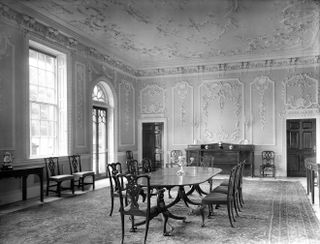
In 2015, Bidwells sold the Rushbrooke estate in Suffolk, including a village constructed in the 1960s. Despite the fact that its Jermyn-family-built house burnt down in 1961 when in the ownership of the Rothschilds, it sold very well. ‘Buyers want what they want,’ explains Mr Brooke. ‘Historical association doesn’t affect that.’
Mark McAndrew of Strutt & Parker says that, without a mansion, it’s the mix of components of what is left that’s vital, as well as location. ‘What is lost is the premium estate value.’
At Halnaby, the stables, rebuilt in 1911–12, are now a B&B and other surviving buildings prevail. The house that was there has become a curiosity, represented by snippets of its history, but, as elsewhere, whatever losses are in the past, the positive outlook is that what is departed doesn’t diminish what endures.
Lucy Denton is an associate in the Heritage and Research department at Bidwells. She has a family connection to George Gregory, the last owner of Halnaby Hall.
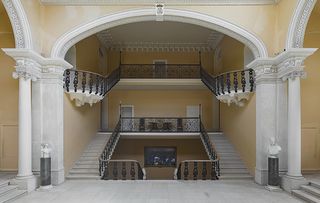
Marston House, Somerset: A magnificent example of Victorian enrichment of a great Georgian country house
One of the most important Georgian houses of south-western England has been rescued from the brink of demolition. John Robinson
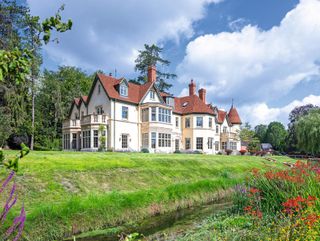
The best country house architects in Britain
Country Life has once again delved into its to update the list of the finest architects in Britain — an
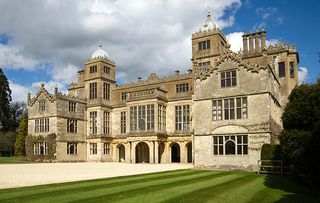
Credit: Alamy
Buying a listed building: The dos and don’ts you need to know
Buying a listed property in need of restoration is not for the faint of heart, but follow these few simple
Bringing the quintessential English rural idle to life via interiors, food and drink, property and more Country Life’s travel content offers a window into the stunning scenery, imposing stately homes and quaint villages which make the UK’s countryside some of the most visited in the world.
-
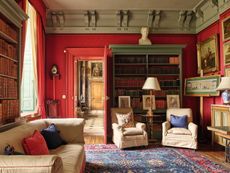 The fire that destroyed Bramham Park — and the astonishing revival that it sparked
The fire that destroyed Bramham Park — and the astonishing revival that it sparkedIn the second of three articles on Bramham Park, West Yorkshire — the home of Nick and Rachel Lane Fox — John Goodall tells the story of the destruction of this house by fire in 1828 and its astonishing revival that continues into the 21st century.
By John Goodall Published
-
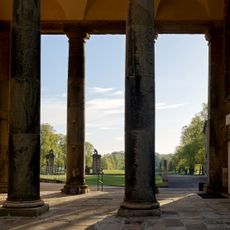 Bramham Park: A Palladian premonition
Bramham Park: A Palladian premonitionBramham Park is one of the most original and idiosyncratic houses of early 18th-century Yorkshire. Richard Hewlings examines its history and origins, and offers a fresh analysis of its architecture. Photographs by Paul Highnam for Country Life.
By Richard Hewlings Published
-
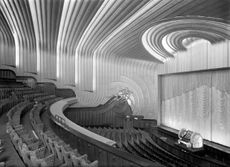 Seven of the UKs best Art Deco cinemas that help remind us of what we have (wrongly) long stopped expecting from public buildings
Seven of the UKs best Art Deco cinemas that help remind us of what we have (wrongly) long stopped expecting from public buildingsFrom the birthplace of modern cinema, to the home of the largest Wurlitzer theatre pipe organ in Europe, the UK’s remaining Art Deco cinemas are flourishing. Here are seven of the best.
By Amie Elizabeth White Published
-
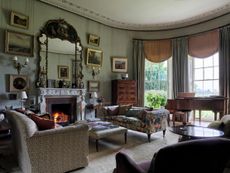 Brockfield Hall, the great Yorkshire house that's gone from Regency mansion to modern family home
Brockfield Hall, the great Yorkshire house that's gone from Regency mansion to modern family homeBrockfield Hall in North Yorkshire is the family home of Charlie Wood and Hatta Byng, editor of House & Garden, who have transformed it since they came here in 2020, winning multiple awards in the process. John Martin Robinson reports on the restoration project that revived this compact Regency house as a modern family home. Photographs by Paul Highnam for Country Life.
By John Martin Robinson Published
-
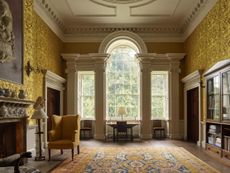 Country Life's top 10 architecture stories of 2024, from the palace that's 'the stuff of dreams' to a Palladian masterpiece you can rent by the weekend
Country Life's top 10 architecture stories of 2024, from the palace that's 'the stuff of dreams' to a Palladian masterpiece you can rent by the weekendWe take a look back at our most popular architecture articles of the last 12 months.
By Toby Keel Published
-
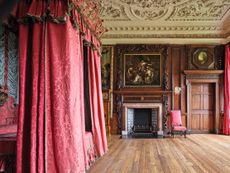 Holyrood: Inside The King's official residence in Scotland, from throne room to the bed chamber of Mary, Queen of Scots
Holyrood: Inside The King's official residence in Scotland, from throne room to the bed chamber of Mary, Queen of ScotsHolyrood — or, to give it its full title, The Palace of Holyroodhouse — is the official residence in Scotland of His Majesty King Charles III. To coincide with the publication of a new history of the palace, John Goodall offers an overview of the creation, abandonment and rebirth of this working royal residence over the past 900 years. Photographs by Paul Highnam for Country Life.
By John Goodall Published
-
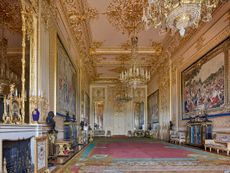 From Windsor Castle and the Reform Club to the house where Ghosts is filmed: Country Life's best architecture stories of 2023
From Windsor Castle and the Reform Club to the house where Ghosts is filmed: Country Life's best architecture stories of 2023We take a look back at a wonderful year of architecture articles in Country Life, including an astonishing look inside Windsor Castle with pictures taken just days before the death of the late Queen Elizabeth II.
By Toby Keel Published
-
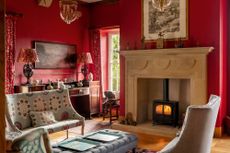 Hellifield Peel Tower: The miraculous revival of a medieval tower in Yorkshire
Hellifield Peel Tower: The miraculous revival of a medieval tower in YorkshireHellifield Peel Tower in North Yorkshire was not so long ago a decaying shell. Now, this medieval peel tower has undergone a near miraculous restoration and revival as a family home. Jeremy Musson reports. Photographs by Christopher John for Country Life.
By Jeremy Musson Published

